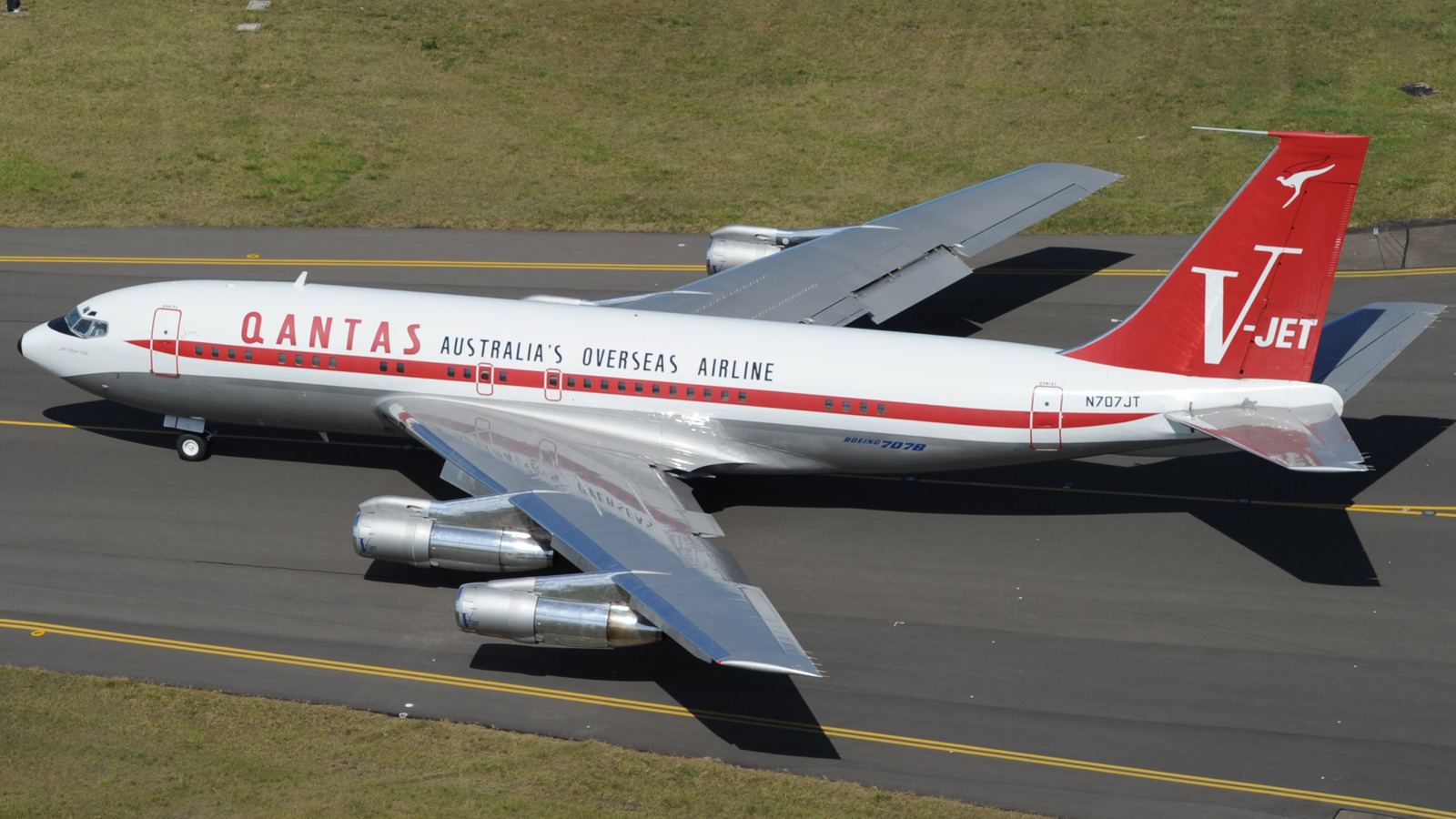Get on a plane today, and there’s a good chance you’re either on a 737, a 757, a 767, a 777, or a 787. There’s even a chance you’re on the venerable 747, which some airlines still fly. That’s quite the soup of numbers, but you’ve probably noticed that it follows a very particular format: 7X7. Why are planes named like this?
These designations are used by American aviation juggernaut Boeing. Over the company’s storied history, it’s used 100-block numbers to distinguish its offerings, like propeller planes (300 and 400) and missiles (600), for example. The 700 block was for jet-engine airliners. Makes sense, but where did that “X7” part come from?
That goes back to Boeing’s very first commercial jet, the 707 (pictured), first flown in 1957. Theoretically, that could have just been called the 700, but Boeing stuck a “7” on the end instead. Perhaps it just rolled off the tongue better, but it should be noted that “707” has added significance to the mathematically inclined. It represents the first three digits of both the sine and the cosine of 45 degrees, something every engineer would be familiar with. That, in turn, might well have emphasized one of the 707’s innovations, the swept-wing design that angled the wings from the fuselage rather than having them stick straight out. Just don’t tell anyone that the wings were actually angled at 35 degrees, not 45.
How the 7X7 convention locked in
The jet age truly captured the public’s imagination, another sign that technology was transforming the world in radical ways. The Boeing 707 became an icon of the era, something of a cultural touchstone. Swimsuit manufacturer Jantzen even named its 1957 collection after the plane. Given that incredible popularity, Boeing seems to have realized that 7X7 was now a marketable branding.
Boeing’s next plane was a variant of the 707 called the 720, intended for shorter flights and smaller runways. But when Boeing unveiled its second entirely new jet in 1963, it was called the 727 (pictured), clearly a combination of the previous two names. After that, the convention simply stuck: Next up was the 737, followed by the 747, followed by the 757, all the way up until Boeing’s newest plane, the 787 Dreamliner. (Boeing did plug the “gap” by naming a jet, first flown in 1998, the 717.)
The convention is simply synonymous with Boeing now, and nearly 70 years later, the company has not strayed from it. Doing so would be a cultural shock in the aviation world. But that day may be coming.
Where 7X7 goes from here
Boeing’s most recent all-new commercial aircraft, the 787 Dreamliner (pictured), first flew in 2009. Since then, the company has mostly been developing advanced variants of older airframes, such as the troubled 737 MAX and the also troubled 777X. Boeing has had a New Middle-Market Airplane (NMA) project kicking around for a while, which would replace its aging 757 and 767 planes; this would, very likely, be called the 797 once it finally gets made.
After that, though, Boeing will have simply run out of digits. In principle, it could go up to a “7107,” but that just doesn’t look very good in text, does it? So it’s probable that Boeing will finally have to lay its naming convention to rest.
Still, since the NMA isn’t even designed yet, and there usually are decades between the development of planes, we have a long way to go before we get there. Then again, maybe Boeing will just stick it out, so that in your old age, you’ll be flying a “7A7.”





